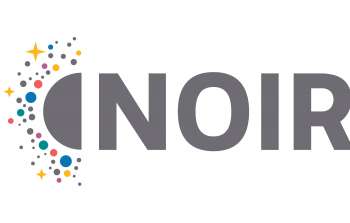sci10001 — Announcement
Science with Optical Interferometry - An Invitation to Join the SOC
January 31, 2010
The rapid recent and on-going development of optical interferometry is offering astronomers a new, precision tool with angular resolution of order 1 milliarcsec. Though the number of interferometry science publications now exceeds 400, the technique and its potential are still not widely known. Encouraged by a recommendation from the ReSTAR report, and by community input tabulated in the ALTAIR Report, NOAO continues to follow the field closely and to watch for opportunities to open interferometry access to the community, as for example through Keck TSIP time and the recent NOAO call for proposals for the CHARA Array.
The 2006 workshop Future Directions for Interferometry sponsored by NOAO, AURA, and CHARA was primarily an interferometry community meeting tasked with short- and long-range planning. Subsequent to discussions at the workshop, the community-based US Interferometry Consortium worked to build a consensus and forward recommendations to the Decadal Review promoting wider access to interferometry facilities.
To further explore and advance this theme, NOAO is collaborating with the Magdalena Ridge Observatory to plan a conference and workshop on Science with Optical Interferometry. Neither the date nor venue are decided, but mid-2011 and a New Mexico location are under consideration. The 2011 meeting will aim to engage the scientific community in using existing optical interferometers to address key science questions, to fully exploit the capabilities of the current generation of instruments, and to identify scientific requirements for the next generation of instrumentation for the existing infrastructure of optical interferometers. The workshop is to be science-driven, as opposed to engineering-driven.
We therefore invite interested community members to join the Science Organizing Committee (SOC) for this conference. We are particularly eager to attract the interest of potential users of interferometry who may bring new perspectives on science opportunities. Interferometry has a proven track record in studies of bright, compact sources (primarily stars and AGN), with applications including stellar rotation, convection and pulsation, winds and mass loss, disks, companions and orbits. Expertise/experience in any of these or similar areas, and interest in the potential of very high angular resolution, would be an excellent basis for participation.
The current schedule envisions planning discussions on the scope and organization of the meeting beginning in the spring of 2010. The long lead time is intended to allow ample opportunity to develop the objectives, plans, agenda and invited speakers. An active SOC is vital to this work.
If you are interested in participating in the SOC, or for information or discussion, please contact Steve Ridgway (stephen.ridgway@noirlab.edu).
Contacts
stephen.ridgway@noirlab.edu
About the Announcement
| Id: |
ID
sci10001
|
